GIGABYTE Z68X-UD7-B3 Intel Z68 Motherboard Review
The GIGABYTE Z68X-UD7-B3 – The New Flagship
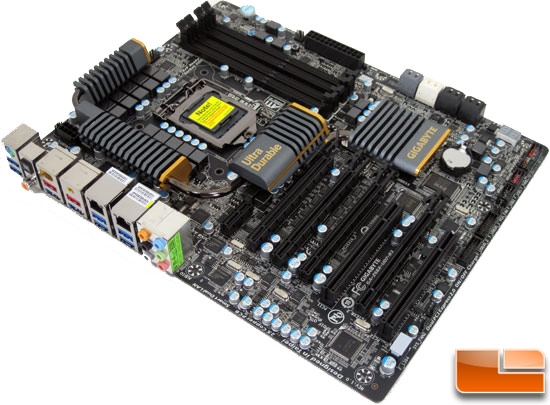
GIGABYTE has been building computer components for going on twenty five years now. Consistently improving, redesigning and bringing new features to the market, GIGABYTE is on the leading edge of the market. Over the past couple of years, I have used several GIGABYTE motherboards in some of my personal systems, and reviewed even more GIGABYTE products. Throughout my personal experience with GIGABYTE products, I have always been happy with the GIGABYTE products. Hopefully when all is said and done, today will be no different!
Today we have the top of the line Intel Z68 express chipset motherboard from GIGABYTE, the GIGABYTE Z68X-UD7-B3! Being the flagship socket 1155 motherboard from GIGABYTE, the Z68X-UD7-B3 isn’t priced for faint of heart. It is priced for those of us that will pay for the quality and want all the features that the GIGABYTE Z68X-UD7-B3 had to offer! Right now you can pick up the GIGABYTE Z68X-UD7-B3 for as little as $337.91 Plus shipping.
There are two main features that were essentially added to the Intel P67 Chipset to make up the new Z68 chipset. The first is Intel Smart Response Technology, a quote about Intel Smart Response Technology from Joe’s article:
Using the latest version of Rapid Storage Technology drivers (10.5) and adjusting some easy settings in the Intel Control Center you essentially create a RAID configuration which treats the SSD as a cache for the most frequently used data. Access then comes via the faster SSD rather than the slower HDD, increasing performance markedly. Right now, some are thinking, wait, this isn’t new…we’ve seen a version of this before! The voices in your head are correct. A while back we had a look at the Seagate Momentus XT Hybrid drive which essentially employs the same concept, albeit all bundled on a single drive.
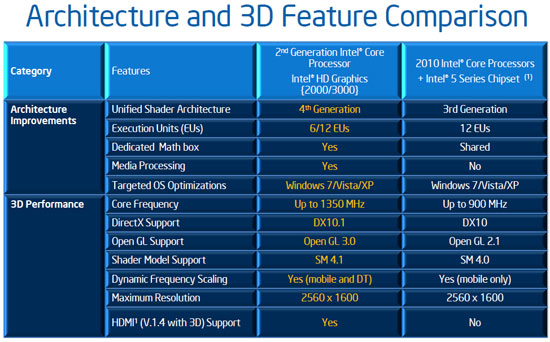
The second feature that was employed was the ability to use the Intel HD Graphics on the second generation Intel Core iX series processors. While the graphic aren’t that spectacular for gaming purposes, they do have a number of capabilities that can be quite handy. One of which is Intel Quick Sync Video, also commonly referred to as Intel QSV. Intel QSV completes the video processing on the hardware instead of on the software.
For some reason, GIGABYTE chose not to implement the second half of the Intel Z68 chipset features on the GIGABYTE Z68X-UD7-B3. Gigabyte hinted that enthusiasts wouldn’t be wanting that feature on a high-end board like the Z68X-UD7, but since consumers are paying an extra $55 for this board over the P67A-UD7 we think that choice should be up to them.
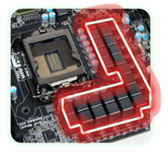
The GIGABYTE Z68X-UD7-B3 has 24 Phases of power being delivered to the CPU help to build a much more reliable power delivery system. The entire GIGABYTE 6 series of motherboards uses DUAL CPU Power Technology. This technology allows the CPU VRM power phases to split into a pair of power engines that work together. In the case of the Z68X-UD7-B3 12 phases will be inactive while the other 12 are supplying power.
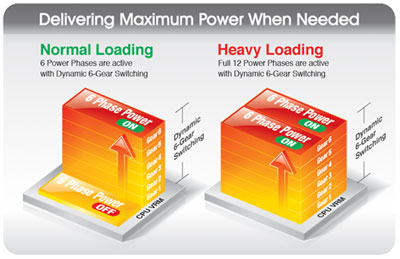
If you are using your shiny new GIGABYTE Z68X-UD7-B3 for some light work like web browsing or any other task that isn’t very CPU intensive, the Dual CPU Power Technology will drop the number of phases that are active. Fire up an application like Folding at Home that will really use the CPU power that you have and the GIGABYTE Z68X-UD7-B3 will increase the number of active phases up to the maximum 24 for the ultimate power delivery system.
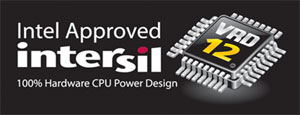
Speaking of power phases, all of the GIGABYTE 6 series motherboards use an Intersil PWM controller. The Intersil PWM controller has been approved by Intel and is VRD 12 compliant. The Intel approved PWM controller offers SerialVID (SVID); this transfers power management information from the processor to the voltage regulator controller. This allows a more efficient signaling control between the CPU and PWM controller. What does this mean for the end user? Ideally, a more energy efficient system.
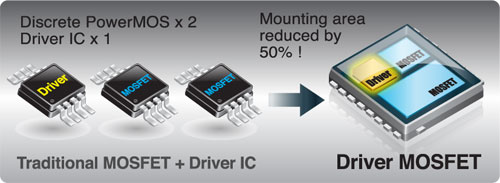
Traditional power delivery consists of a pair pf discrete PowerMOS and a driver IC. GIGABYTE has incorporated these components into a single chip. Doing this gives us several advantages. One of these advantages is size. The area required to mount the Driver MOSFET’s is reduced by 50%. This will leave real estate available on the PCB for other integrated devices. Driver MOSFET’s can achieve increased efficiency and higher power transfer at higher switching frequencies. This will help satisfy the growing power needs of the current processors.
One aspect of the Intel Z68 chipset that is an issue for some is the limited number of PCI express lanes. Being limited to a total of 16 lanes some companies have thrown in a third party chip to add some lanes. ASUS used the PLX PEX8608 chip to add a few extra lanes on the ASUS P8P67 Deluxe to bring the total number of PCIe lanes to 24. 20 of which are usable by the PCIe graphics. GIGABYTE went a different route, they added the NVIDIA NF200 chip to give a total of 32 PCIe lanes to the P67A-UD7-B3. This allows the Z68X-UD7-B3 to operate a pair of cards at x16 each or four cards at x8 each.
GIGABYTE Z68X-UD7-B3 Z68 Chipset Motherboard Specifications
| CPU | – Support for:
|
| Chipset | – Intel Z68 Express Chipset |
| Memory |
|
| Audio |
|
| LAN |
|
| Expansion Slots |
|
| Multi-Graphics Technology | – Support for 2-Way/3-Way ATI CrossFireX/NVIDIA SLI technology |
| Storage Interface | – Chipset:
– 2 x Marvell 88SE9128 chips:
|
| USB | – Chipset:
– 2 x Renesas D720200 chips and 2 x VLI VL810 hubs:
|
| IEEE 1394 | – T.I. TSB43AB23 chip:
|
| Internal I/O Connectors |
|
| Back Panel Connectors |
|
| I/O Controller | – iTE IT8728 chip |
| H/W Monitoring |
|
| BIOS |
|
| Unique Features |
|
| Form Factor | ATX Form Factor; 30.5cm x 24.4cm |
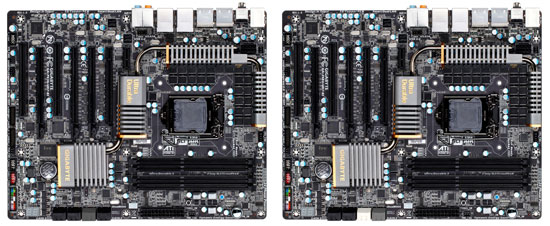
The GIGABYTE Z68X-UD7-B3 is identical to the GIGABYTE P67A-UD7-B3 that we took a look at a little over a month ago. In the above photo you can see that the boards are virtually identical. The only visual differences I was able to find was the color of the SATA III 6Gbps ports. If you are interested in the bundle, layout, or system BIOS of the GIGABYTE Z68X-UD7-B3 please reference the appropriate pages of our GIGABYTE P67A-UD7-B3 review as they are identical. For now let’s jump to the test system page and take a look at what we will be using for our system today!

Comments are closed.